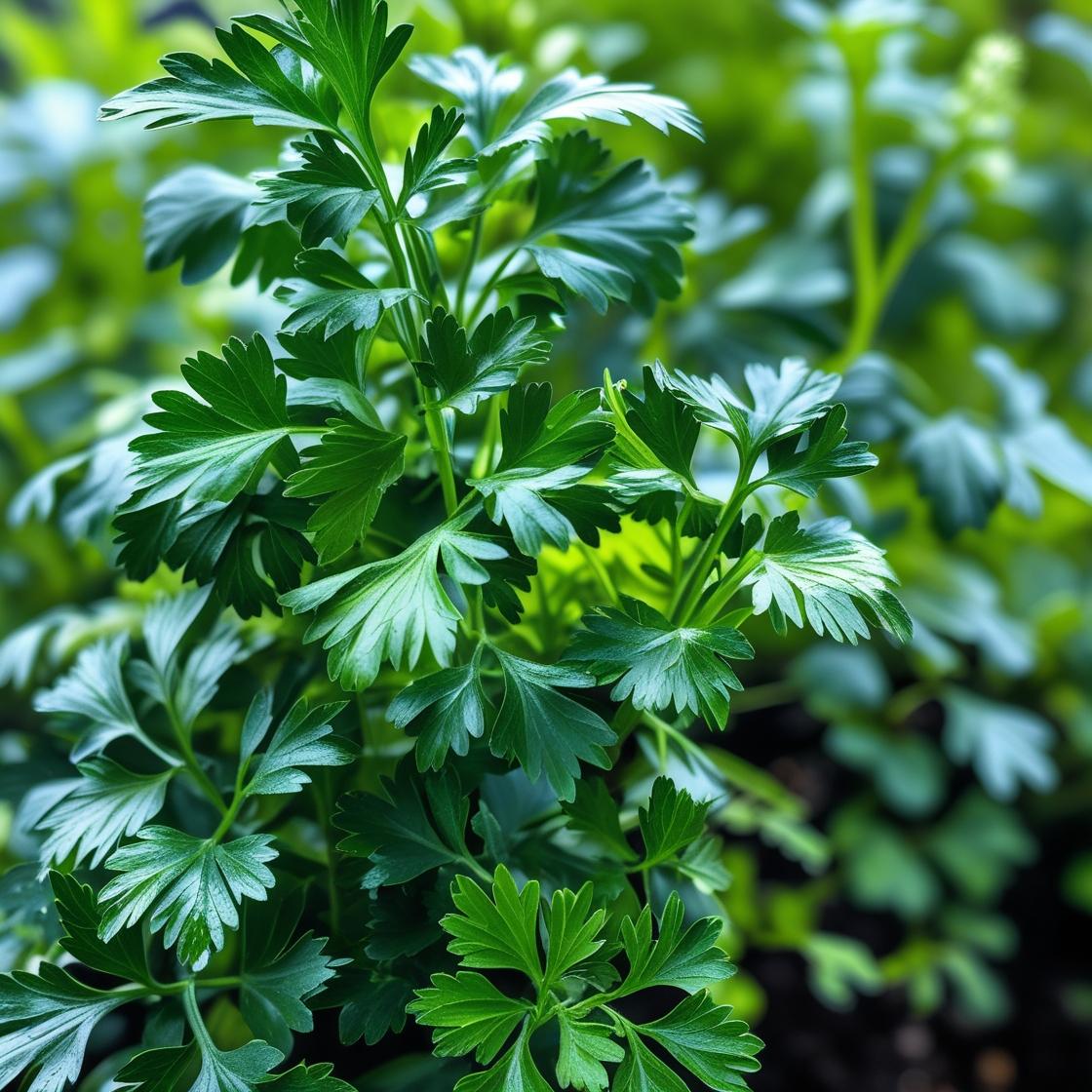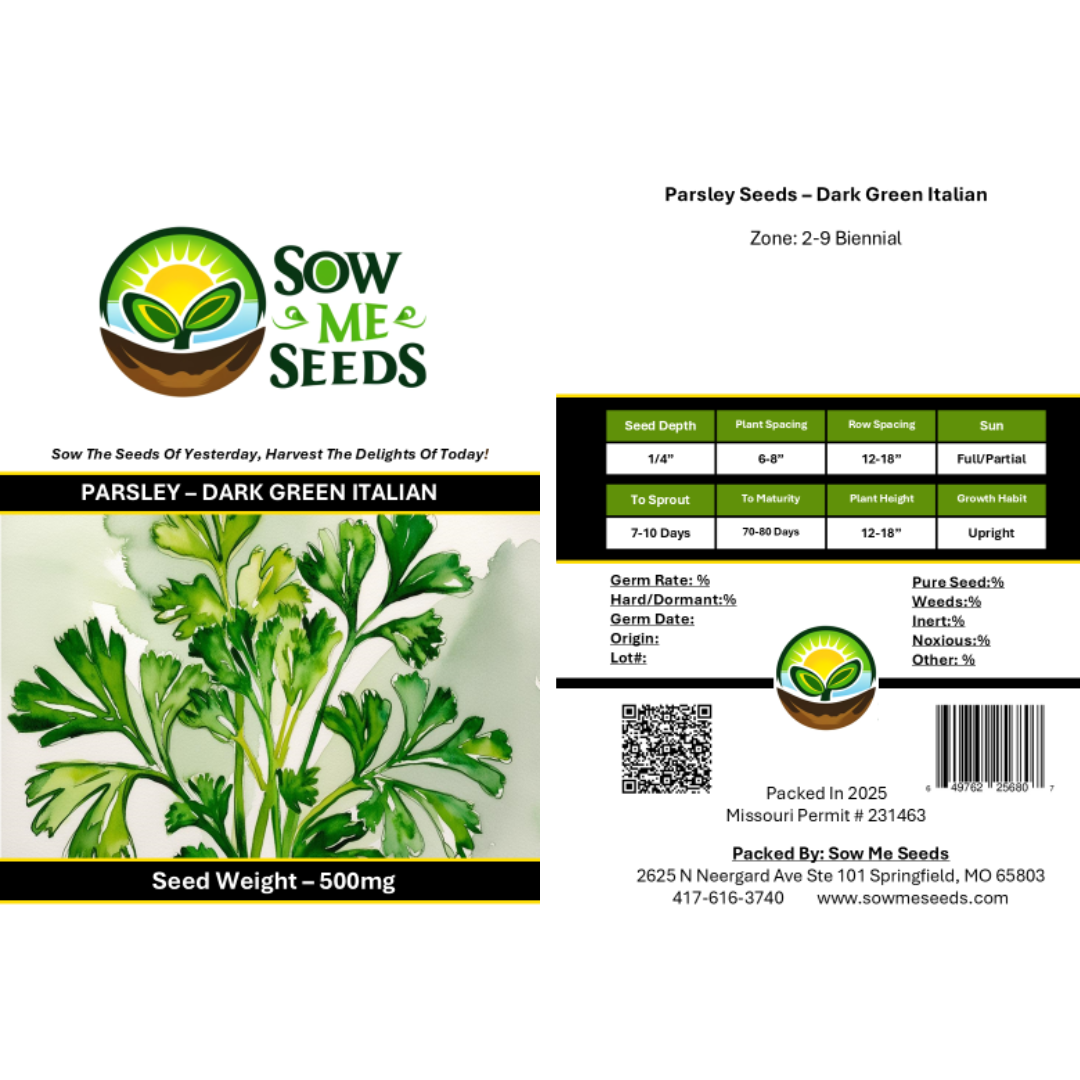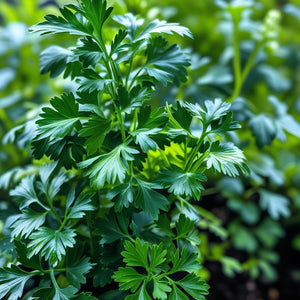- Hardiness Zone: 2-9 Biennial Usually Grown As An Annual
Seed Depth: 1/4 inch
Seed Spacing: 6–8 inches
Row Spacing: 12–18 inches
Sunlight: Full sun to partial shade
Days to Sprout: 14–21 days
Days to Maturity: 75–85 days
Growth Habit: Upright, bushy biennial (grown as an annual)
Sunlight: Thrives in full sun but tolerates partial shade, especially in hotter climates.
Soil Type: Prefers well-drained, fertile soil with a pH of 6.0–7.5. Adding compost or organic matter enhances growth.
When to Plant: Sow seeds directly outdoors after the last frost, or start indoors 6–8 weeks before the last frost for an earlier harvest.
Direct Sowing: Plant seeds 1/4 inch deep and 6–8 inches apart in rows spaced 12–18 inches apart.
Indoor Sowing: Soak seeds overnight before planting in seed trays. Transplant seedlings once they have 2–3 true leaves.
Succession Planting: Sow every 2–3 weeks to ensure a continuous supply of fresh leaves.
Watering: Water regularly to keep soil evenly moist but not waterlogged. Parsley thrives with consistent moisture.
Fertilizing: Apply a balanced fertilizer or compost at planting and during mid-season to encourage lush growth.
Pruning: Harvest outer leaves regularly to promote new growth and maintain the plant's shape.
Pest and Disease Control: Monitor for aphids and caterpillars; use organic treatments or hand-pick pests as needed.
When to Harvest: Harvest leaves when they reach 6–8 inches in length, typically 75–85 days after planting. Younger leaves can be picked earlier for fresh use.
How to Harvest: Use scissors or a sharp knife to cut stems at the base, leaving the center intact for continued growth.
Seed Collection: Allow some plants to bolt and flower. Collect seeds from dried seed heads.
Storing Seeds: Dry seeds thoroughly and store them in an airtight container in a cool, dry place.
Why You’ll Love It
Bold Flavor: Rich, slightly peppery taste perfect for cooking and garnishing.
High-Yielding: Produces an abundance of flat, dark green leaves on strong, upright stems.
Heat and Cold Tolerant: Performs well across a wide range of climates — great for spring, summer, or fall gardens.
Culinary Essential: A go-to herb for soups, salads, sauces, and more.
Plant Characteristics
Height: 12–18 inches
Growth Habit: Upright with leafy stems and deeply cut flat leaves
Leaf Type: Dark green, flat, and aromatic
Days to Maturity: 70–80 days
Hardiness: Biennial grown as an annual
Flavor and Culinary Uses
Flavor: Bold, fresh, and slightly peppery — more intense than curly parsley
Culinary Uses: Perfect for chimichurri, tabbouleh, soups, sauces, salads, and garnishing everything from pasta to roasted meats
Companion Planting Tips
Good Companions: Tomatoes, carrots, chives, and onions
Avoid Planting Near: Lettuce (may compete for nutrients)
Bonus Benefit: Attracts beneficial insects and improves the flavor of nearby crops
Common Issues and Solutions
Slow Germination: Soak seeds for 12–24 hours before planting and be patient — parsley takes time to sprout
Leaf Spot: Water at the base of plants and provide good airflow to reduce fungal issues
Bolting: Harvest regularly and plant in partial shade during hot months to extend the growing season
Seeds Per Packet
| 500mg | Approximately 400 |
| 2g | Approximately 1,600 |
Why You’ll Love It
Bold Flavor: Rich, slightly peppery taste perfect for cooking and garnishing.
High-Yielding: Produces an abundance of flat, dark green leaves on strong, upright stems.
Heat and Cold Tolerant: Performs well across a wide range of climates — great for spring, summer, or fall gardens.
Culinary Essential: A go-to herb for soups, salads, sauces, and more.
Plant Characteristics
Height: 12–18 inches
Growth Habit: Upright with leafy stems and deeply cut flat leaves
Leaf Type: Dark green, flat, and aromatic
Days to Maturity: 70–80 days
Hardiness: Biennial grown as an annual
Flavor and Culinary Uses
Flavor: Bold, fresh, and slightly peppery — more intense than curly parsley
Culinary Uses: Perfect for chimichurri, tabbouleh, soups, sauces, salads, and garnishing everything from pasta to roasted meats
Companion Planting Tips
Good Companions: Tomatoes, carrots, chives, and onions
Avoid Planting Near: Lettuce (may compete for nutrients)
Bonus Benefit: Attracts beneficial insects and improves the flavor of nearby crops
Common Issues and Solutions
Slow Germination: Soak seeds for 12–24 hours before planting and be patient — parsley takes time to sprout
Leaf Spot: Water at the base of plants and provide good airflow to reduce fungal issues
Bolting: Harvest regularly and plant in partial shade during hot months to extend the growing season
Seeds Per Packet
| 500mg | Approximately 400 |
| 2g | Approximately 1,600 |





Share and get 15% off!
Simply share this product on one of the following social networks and you will unlock 15% off!